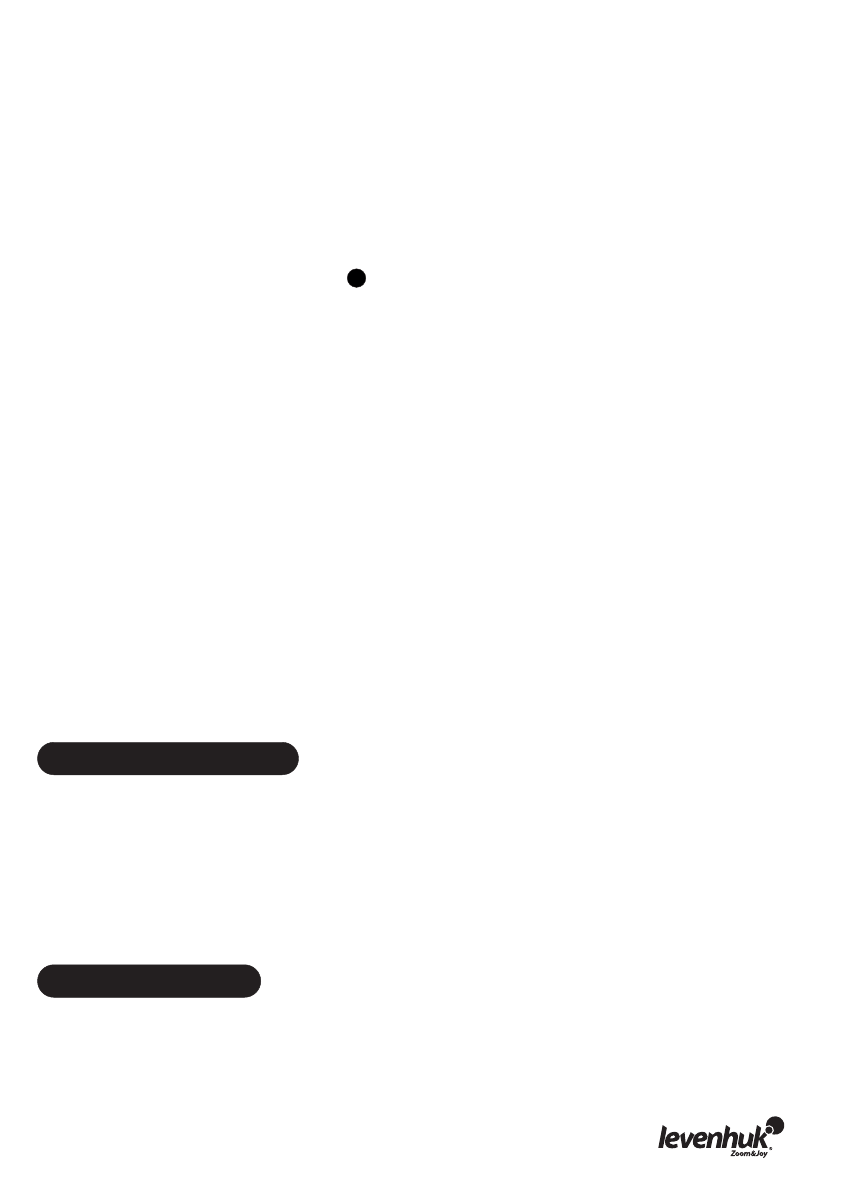Телескопы Bresser Pollux 150 1400 EQ2 - инструкция пользователя по применению, эксплуатации и установке на русском языке. Мы надеемся, она поможет вам решить возникшие у вас вопросы при эксплуатации техники.
Если остались вопросы, задайте их в комментариях после инструкции.
"Загружаем инструкцию", означает, что нужно подождать пока файл загрузится и можно будет его читать онлайн. Некоторые инструкции очень большие и время их появления зависит от вашей скорости интернета.

Pointing in any direction other than due North requires a combination of R.A. and Dec. positions.
This can be visualized as a series of Dec. arcs, each resulting from the position of rotation around
the R.A. axis. In practice however, the telescope is usually pointed, with the aid of a finderscope,
by loosening both the R.A. and Dec. locks and swiveling the mount around both axes until the
object is centered in the eyepiece. The swiveling is best done by placing one hand on the
telescope tube and the other on the counterweight rod, so that the movement around both axes
is smooth, and no extra lateral force is applied to the axis-bearings. When the object is centered,
make sure the R.A. and Dec. locks are both retightened to hold the object in the field of view and
allow tracking by adjusting R.A. only.
Telescopes with long focal lengths often have a "blind spot" when pointing near the zenith,
because the eyepiece-end of the optical tube bumps into the mount's legs. To avoid this, the tube
can be very carefully slipped up inside the ring clamps. This can be done safely because the tube
is pointing almost vertically, and therefore moving it does not cause a Dec. balance problem. It is
very important to move the tube back to the Dec. balanced position before observing other sky
areas.
Something which can also be a problem is that the optical tube often rotates so that the
eyepiece, finderscope and the focusing knobs are in less convenient positions. The diagonal
mirror can be rotated to adjust the eyepiece. However, to adjust the positions of the finderscope
and focusing knobs, loosen the tube rings holding the telescope tube and gently rotate it. Do this
when you are going to observe an area for while, as it is inconvenient to repeat every time you
briefly go to a new area.
Finally, there are a few things to consider to ensure that you are comfortable during the viewing
session. First is setting the height of the mount above the ground by adjusting the tripod legs. You
must consider the height that you want your eyepiece to be, and if possible plan on sitting on a
comfortable chair or stool. Very long optical tubes need to be mounted higher or you will end up
crouching or lying on the ground when looking at objects near the zenith. However, a short
optical tube can be mounted lower so that there is less movement due to vibration sources, such
as wind. This is something that should be decided before going through the effort of polar
aligning the mount.
23
To attach a camera to your telescope you may need an adapter to get the camera focused. Some
reflectors require wider motion range than the one allowed by the focuser; some refractors are
designed to be used with diagonal mirrors and thus need a longer focal length when used with
camera.
To achieve that, simply attach an extender to the focuser of your telescope and then attach the
camera with a T-adapter to the extender.
Camera adapter
Maintenance
Replace the dust cap over the front end of the telescope whenever it is not in use. This prevents
dust from settling on the mirror or lens surfaces. Be careful when cleaning optics and try not to
damage the coating. Use only special cleaning wipes.








































